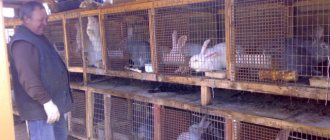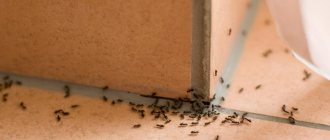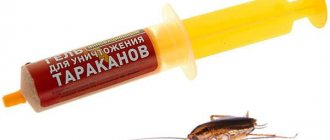How to assemble a separator and its malfunctions
Separators are sold unassembled in cardboard packaging. The kit includes an electric motor, a drum containing 10 to 12 plates, two drains, a float chamber and a bowl. If you are assembling it for the first time, then lay out all these parts on the table. Pull the base housing the motor towards you.
Take the drum in your hand, its tip should be on top, and place it on the motor shaft. He should sit down without effort. Make a few turns by hand to make sure there is no misalignment leading to scoring or snags. After this, install the drains. First, the skim milk receiver is put on, and then the cream receiver. On one of them there is a small groove at the bottom, which must be aligned with the recess on the body. It will be the bottom one, so you won’t confuse them with each other. The top drain can be rotated to any convenient position. Next, the float chamber is put on. Place a float on top. This is a small white disk. Now you can install the bowl into which the milk is poured. She does not have any fixation, but under the weight of milk she will stand very securely. When a little milk remains during operation, it is better to hold it with your hands. At the end you need to install a plug/tap. It is a plastic tube with an extension on one side and a T-shaped handle on the other. In the extension there is a hole that opens or closes the flow of milk from the bowl. You need to turn the T-shaped handle perpendicular to the notch on the bowl, i.e. make the closed position.
Pour the required amount of milk into the bowl. Turn on the device and wait until it reaches operating speed. Startup will take 1.5-2 minutes. To start dispensing milk, you need to unfold the sharp edge of the handle at the stopper, aligning it in one line with the mark on the end of the bowl.
Reasons why the separator does not work
The device may not work at all or may not work properly due to breakdowns or assembly errors.
How are mechanism defects and separator operating features related?
- The drum does not respond to button presses. Everything is simple here: either the button is faulty, or the internal contacts have come loose, or the motor itself has failed.
- The separator produces cream of incorrect fat content and thickness, even with the correct screw settings. This means that the adjustment hole is clogged. Cleaning with a brush will quickly improve the situation.
- The separator parts rattle when starting up. If there is no milk in the bowl, then extraneous sounds are normal. If there is liquid, but the grinding noise remains, the reason is improper assembly of the device components.
- During operation, knocks are heard inside the separator. There are several reasons for this. The drum could be clogged or its parts may not be assembled correctly. The nuts that secure the motor are loose. The motor shaft is bent or deformed. The separator is tilted. Factory defects are to blame, and it is worth taking the device in for repair under warranty.
- The drum does not gain the required pressure and number of revolutions. Option one: insufficient power supply. Option two: faulty socket or wiring. Option three: the unit’s engine is broken.
See also
What is the normal percentage of fat content in homemade cow's milk and what it depends onRead
What if the cream is thick?
During operation of the separator, on the one hand, a completely non-critical problem may arise. The moment the separator begins to produce too thick cream, many people throw the device in the trash without understanding the reason.
At its core, thick cream is the same as sour cream, only the fat content is several times less.
There are several ways to solve this problem:
- It is worth tightening the creamer, where the cream flows from.
- Turn the adjusting screw until the desired consistency is achieved.
- You can try to adjust the milk supply using the flag, increasing the opening for milk supply.
The difference between goat's milk and cow's milk?
First of all, let us explain why we decided to comment on the facts about goat milk. Discussions on “how to separate goat milk”, “how to choose a separator for this”, etc. have become common in forums for farmers. And we decided to add a few well-known facts so that you don’t have to search for them on the Internet for a long time.
Now goat milk has begun to gain popularity again and there are several main reasons:
- goats are less demanding on the amount of food - 2-5 times less than what a cow needs / This is beneficial. And their dimensions are 2-3 times smaller than those of cows.
- goat milk and products made from it (cheese) are less likely to cause allergies in humans , and, most importantly, in children.
- The nutritional content of goat milk is superior to cow milk
- goat milk itself and products made from it are now becoming more and more in demand, but demand exceeds supply, which means the cost of goat milk is higher than cow milk and the profitability of farming with goats is becoming more and more profitable.
Let's compare goat's milk with cow's milk:
- goat's milk is just a little fatter - no more than 5-7%. Almost no different from cow's;
- lactose in goat milk is 13% less , which is positive for people prone to lactose intolerance;
- Goat milk contains almost no (trace amounts) of the allergen - alpha-S1-casein protein . Light whey proteins break down faster and easier in the digestive tract, are absorbed faster, and this is excellent for dietary and baby food;
- Goat milk contains 4 times more copper, 134% potassium, 10 times more folic acid, 5 times more vitamin B-12.
But there is no difference in separating goat's milk from cow's milk - you just need to buy any milk separator at a reasonable price and all the advantages of goat's milk are in your hands.
How to set up a separator to adjust fat content?
You need to figure out how to properly set up the separator in order to adjust the thickness (fat content) of the cream.
To make liquid
In general, we can distinguish the following algorithm of actions for obtaining liquid cream:
- The milk is heated to a temperature of 35-45 degrees.
- The dishes are washed in a hot soda solution, then rinsed with clean water.
- The separator is installed on a flat horizontal surface.
- The drum must be assembled correctly, in full accordance with the operating instructions. Particular care should be taken when assembling the plates.
- The separation of milk occurs through the action of centrifugal force, which occurs when the drum rotates. An increase in rotation speed speeds up the separation of raw materials into a light fraction (fat) and a heavy fraction (low-fat). Typically, household separators have an average speed of about 8-12 thousand revolutions per minute. It is important to remember that the speed is gained gradually; in the first couple of minutes the required rotation speed is reached and separation occurs poorly. Therefore, it is recommended to run water through the apparatus at the beginning of the process.
- We adjust the adjusting screw to the desired fat content; if the goal is less fatty and liquid cream, the screw is turned to the left.
Problems using the device
Each device has an instruction manual that must be carefully studied and followed. A possible cause of problems may be design features that were not taken into account during assembly. Some problems can be summarized and basic recommendations for correction can be given. However, you should always rely on the model used and information from the manufacturer.
The separated product does not thicken
- The reason may be excessively hot milk, in which case it needs to be cooled to the temperature of fresh milk, about 40 degrees.
- You also need to get rid of dirt from the drum. It should be disassembled, cleaned and rinsed from sediment.
- It would be a good idea to check the position of the adjusting screw. If it is screwed in too much, you need to turn it 1-1.5 turns.
- Thickness will appear after prolonged exposure to the cold. In cases where waiting time is limited, you can use a mixer. The main thing is not to overdo it and make butter.
Why does he drive so fat?
First of all, you need to try changing the position of the regulator. It can also be caused by milk that is too cold. The optimal temperature of the raw material is 35-45 C. The tap is not fully open. The float is not in place.
Content
A milk purification separator is a centrifuge in which, under the influence of centrifugal forces, milk is separated from impurities (milk purification).
Whole milk is fed into the separator from above and flows down a hollow channel, which serves as the axis of rotation of the plate holder. The plate holder is a hollow splined shaft with a set of conical thin-walled plates, in the spaces between which milk is separated into fractions.
In a milk purifier, milk enters the space between the discs (inter-plate space) from the periphery.
Centrifugal milk purification in the separator is made possible due to the different density between the milk plasma particles and foreign impurities. Foreign impurities with a higher density than milk plasma are thrown by centrifugal force towards the walls of the rotating drum, squeezing out the lighter plasma towards the center.
When the drum rotates, foreign impurities settle on the inner surface of the separator body in the form of sludge, which, after milk purification is completed, is removed when disassembling the drum [2] [1] or automatically in self-unloading separators.
Which household milk separator is better to choose?
Many companies produce separators for the production of cream and butter, but how to choose the right one? When purchasing, you need to pay attention to the material, type, functionality of the device; you should buy equipment only from trusted companies that have proven their worth. A household milk separator must meet sanitary standards, be equipped with a reliable design, and be convenient for use at home even in small spaces. Read more about separators that are presented on the Russian market.
- Author: Maria Sukhorukikh
Rate this article:
- 5
- 4
- 3
- 2
- 1
(0 votes, average: 0 out of 5)
Share with your friends!
Introducing the electric milk separator "Penzmash ESB-02" 80l/h
Milk separator "Penzmash ESB-02" 80 l/h is designed for separating whole milk into cream and skim milk while simultaneously purifying the final product from impurities. It has high power, so it can be used not only in domestic conditions, but also on medium-sized farms for separating milk from various animals.
Delicious cream and other homemade dairy products cannot be compared with store-bought counterparts!
Separators in the Cropper online store
In addition to the already presented separator from the Motor Sich brand, you can also purchase models from other manufacturers. The most convenient and pleasant way to buy milk separation devices is in the Cropper online store. Here you will find a large assortment of separators, as well as milking machines, smokehouses, feed cutters, incubators, household autoclaves and distillers. Each unit comes with instructions that will allow you to assemble any equipment without much difficulty.
Orders are paid by cash on delivery, transfer to the store account or by card. You can pick up your parcel at the Nova Poshta, Intime and Delivery branches. Goods are delivered throughout Ukraine. Kharkov residents can pick up orders from the courier.
People running households in villages often keep cows: one, two, or even more. The fresh milk obtained after milking is used for household needs, for sale to visitors or village residents, but it is not always possible to fully sell it or consume it at home. When a large amount of dairy product is collected, it makes sense to process it. A household separator, which is much faster and more reliable than traditional gravity settling or a butter churn, will help you make long-lasting cream or butter from milk.
The milk has stopped being separated
This problem occurs in almost all housewives, but not many are able to solve it. Before looking for serious damage and problems, try adjusting the milk supply regulator to the device.
One of the effective solutions to this issue is to clean all the holes using an ordinary ear stick. In many cases, milk is not separated from clogged channels.
If after these steps the separator continues to separate poorly, you will have to look inside.
Often, devices in which the brushes have worn out for a long time suffer from the problem of poor separation. That is why milk does not go through such an important stage of processing. It is useful to change brushes at least once every two to three months. Thanks to this care, the separator will serve you for a long time and without problems.
Milk is passed through during separation
It may also happen that during the distillation of milk into sour cream, some of the milk is not processed and is mixed with sour cream.
This question comes up quite often on blogs, but it’s almost impossible to find practical advice.
The most basic solution to this issue is to tighten the main screw and regulate the intensity of milk supply. If after these operations the separator still passes liquid sour cream, clean all working holes.
It is also worth considering that the separator may not separate the cream due to the initially high temperature of the milk that is supplied for separation. Perhaps this will be the solution to your issue.











